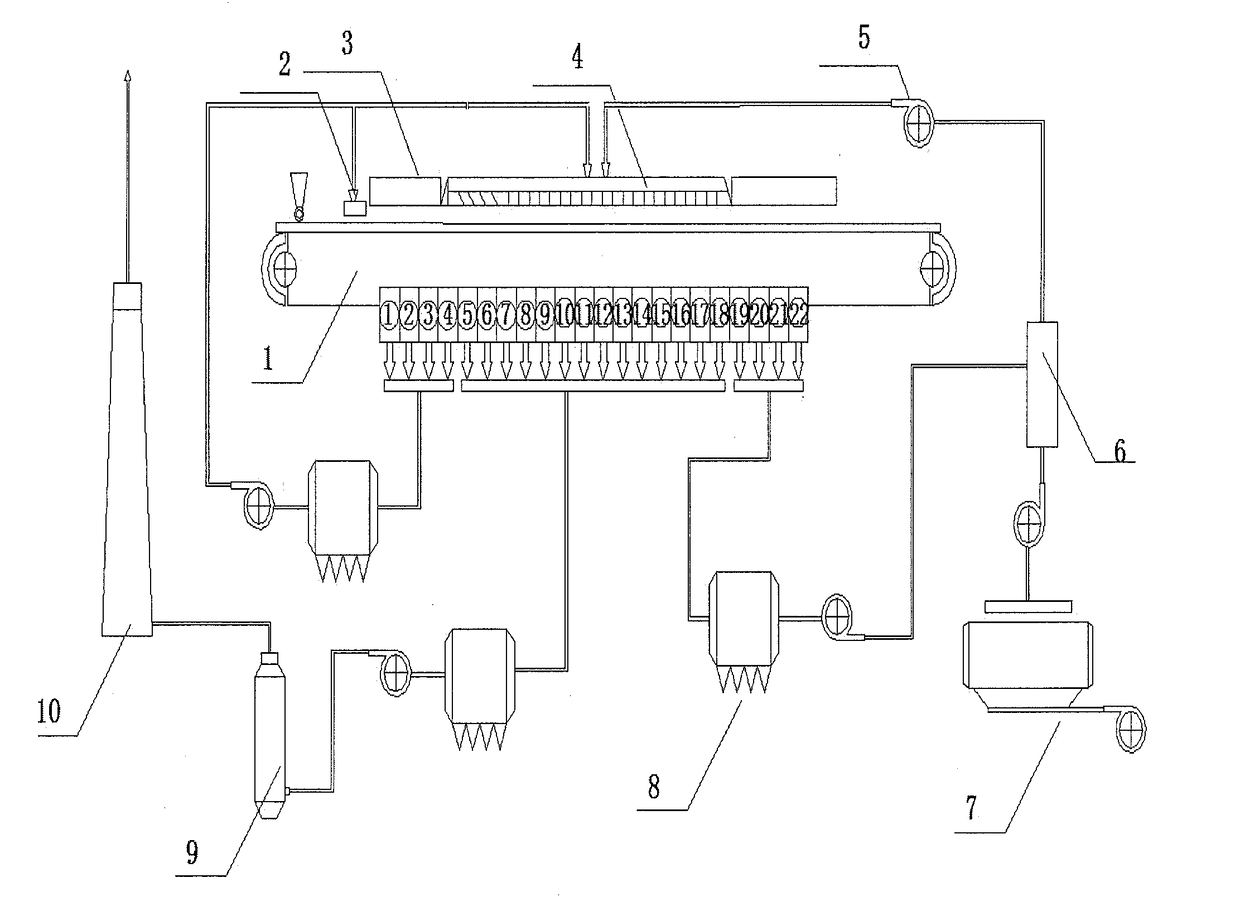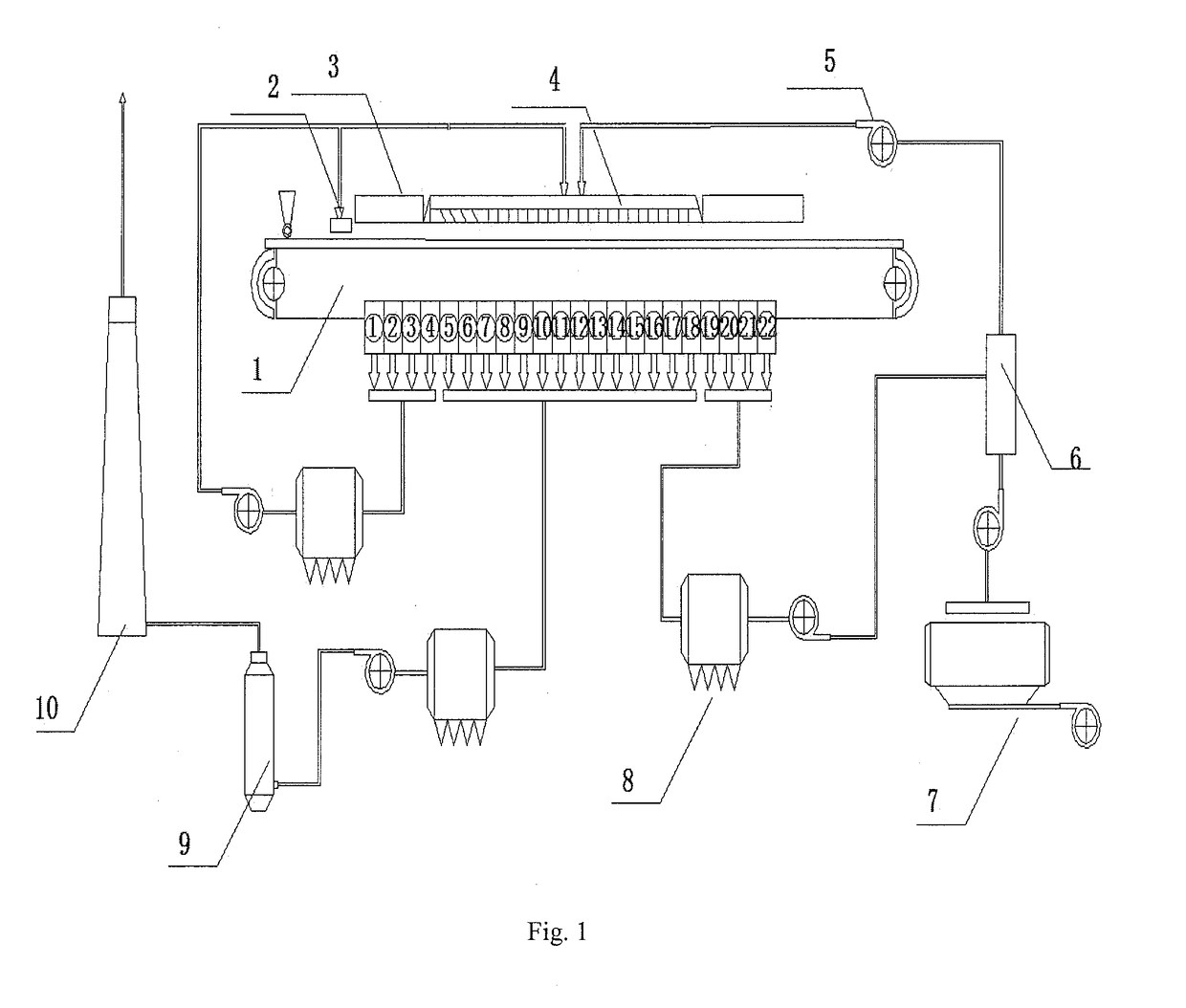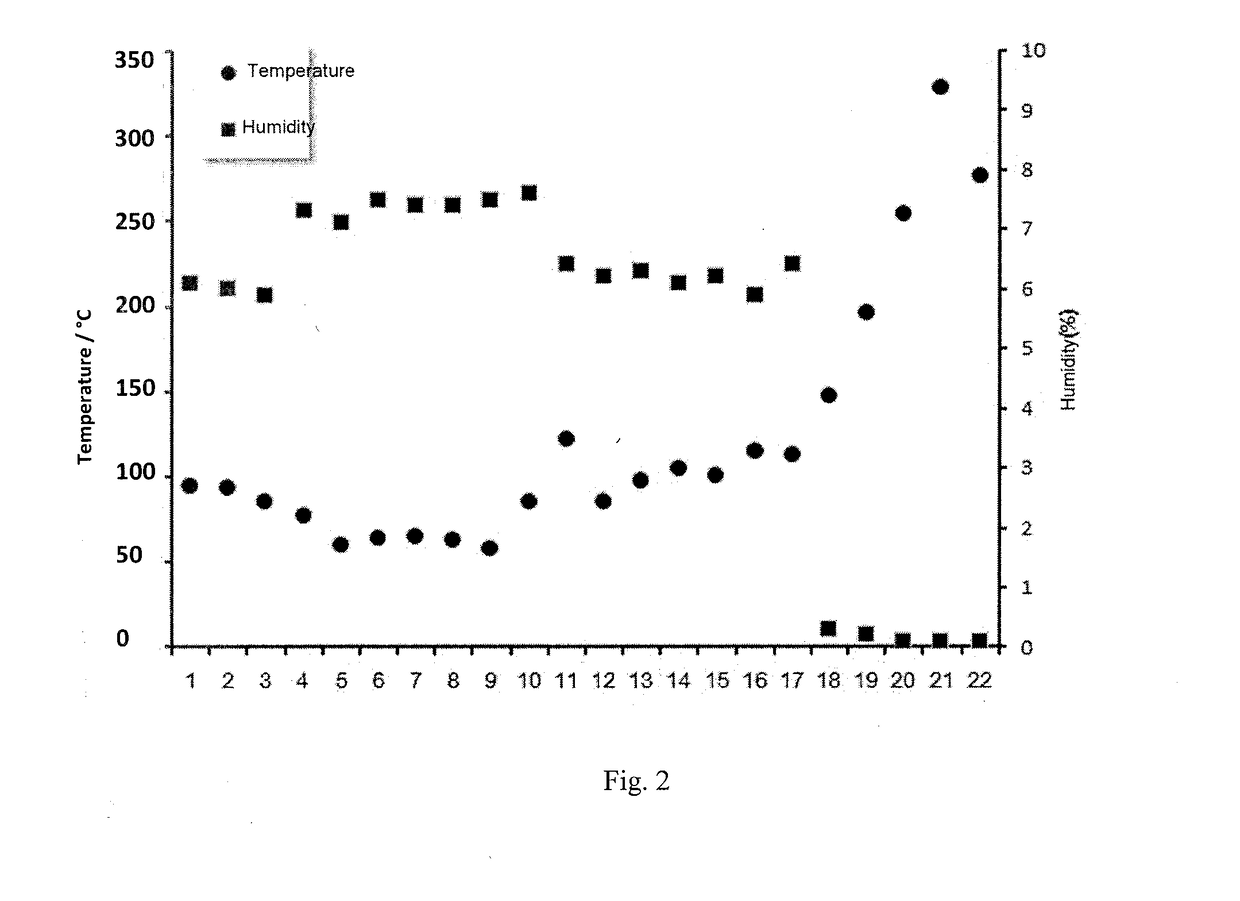Process and system for waste heat grading cyclic utilization and pollutant emission reduction of sintering flue gas
a technology of sintering flue gas and waste heat grading system, which is applied in the field of sintering production technology, can solve the problems of large gap between domestic and foreign plants, high pollution, and serious environmental pollution, and achieve the effect of reducing the total pollutant emissions, improving the recovery efficiency of sintering low-temperature waste heat, and avoiding high pollution
- Summary
- Abstract
- Description
- Claims
- Application Information
AI Technical Summary
Benefits of technology
Problems solved by technology
Method used
Image
Examples
examples
[0045]As shown in FIG. 1, the system comprises a sintering machine 1, {circle around (1)}˜{circle around (4)} represent low-temperature, high-oxygen, low-humidity section bellows, {circle around (5)}˜{circle around (18)} represent middle-temperature, low-oxygen, high-humidity section bellows, and {circle around (19)}˜{circle around (22)} represent high-temperature, high-oxygen, low-humidity section bellows. Wherein, the low-temperature, high-oxygen, low-humidity section bellows {circle around (1)}˜{circle around (4)} are connected to an ignition furnace 2 of the sintering machine 1 and a sealing hot air cover 4 of the sintering machine 1 respectively after being connected to a dust removal device; the middle-temperature, low-oxygen, high-humidity section bellows {circle around (5)}˜{circle around (18)} are connected to a desulfurization device 9 and a chimney 10 successively after being connected to a dust removal device; and the high-temperature, high-oxygen, low-humidity section b...
PUM
| Property | Measurement | Unit |
|---|---|---|
| temperature | aaaaa | aaaaa |
| temperature | aaaaa | aaaaa |
| humidity | aaaaa | aaaaa |
Abstract
Description
Claims
Application Information
 Login to View More
Login to View More - R&D
- Intellectual Property
- Life Sciences
- Materials
- Tech Scout
- Unparalleled Data Quality
- Higher Quality Content
- 60% Fewer Hallucinations
Browse by: Latest US Patents, China's latest patents, Technical Efficacy Thesaurus, Application Domain, Technology Topic, Popular Technical Reports.
© 2025 PatSnap. All rights reserved.Legal|Privacy policy|Modern Slavery Act Transparency Statement|Sitemap|About US| Contact US: help@patsnap.com



